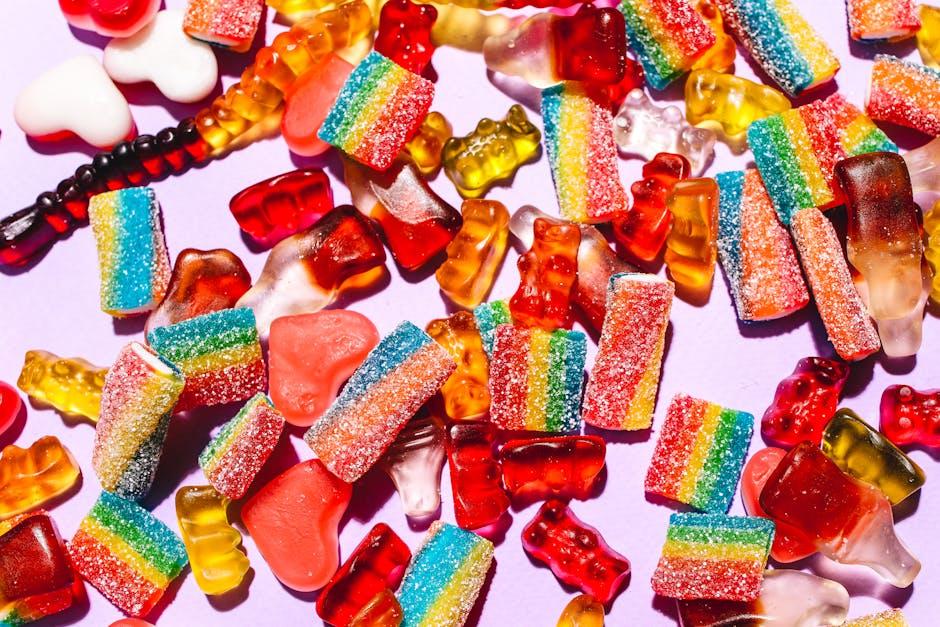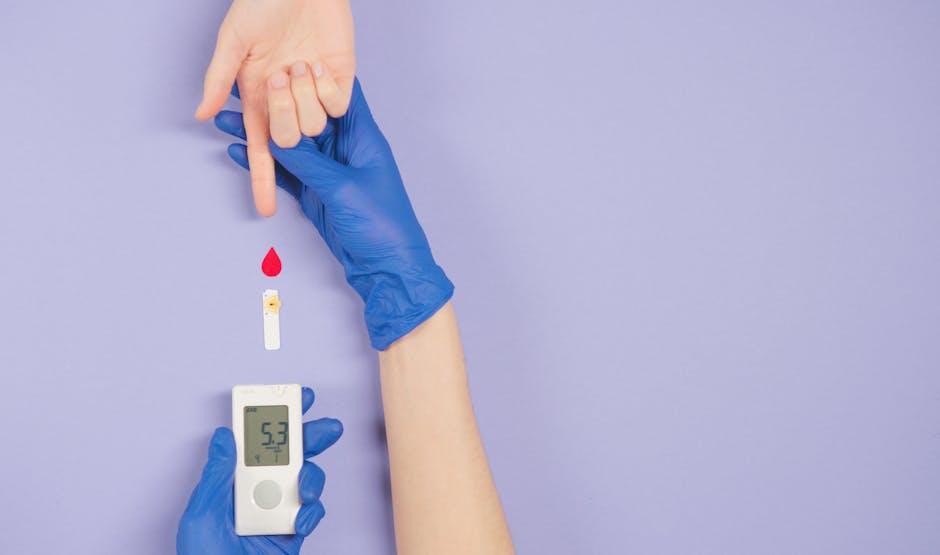:max_bytes(150000):strip_icc():format(jpeg)/7-Day-High-Protein-Diabetes-Friendly-Meal-Plan-to-Help-Build-Muscle-Created-by-a-Dietitian-b73956544bff4e1ba86d04c73423df37.jpg)
| Meal Plan at a Glance | ||
|---|---|---|
| Breakfast/ A.M. Snack | Lunch/ P.M. Snack | Dinner/ Evening Snack |
| Cottage cheese bowl/ Energy balls | Chicken sandwich/ Yogurt parfait | Salmon, Brussels sprouts & potatoes |
| Overnight oats/ Energy balls | Chicken salad/ Stuffed peppers | Chicken parmesan |
| Overnight oats/ Energy balls | Chicken salad/ Yogurt parfait | Tofu tostada/ Pistachios |
| Overnight oats/ Energy balls | Chicken salad/ Apple & nut butter | Steak salad |
| Egg scramble/ Energy balls | Chicken salad/ Yogurt parfait | Chicken casserole/ Edamame |
| Cottage cheese bowl/ Energy balls | Chicken casserole/ Yogurt parfait | Chicken & salad/ Edamame |
| Egg scramble/ Energy balls | Chicken casserole/ Yogurt parfait | Fish tacos/ Edamame |
Day 1
Photographer: Jen Causey, Food Stylist: Margaret Monroe Dickey, Prop Stylist: Priscilla Montiel
Breakfast (462 calories, 38g carbs)
A.M. Snack (206 calories, 22g carbs)
Lunch (389 calories, 39g carbs)
P.M. Snack (146 calories, 15g carbs)
Dinner (592 calories, 45g carbs)
Daily Totals: 1,795 calories, 79g fat, 13g saturated fat, 124g protein, 159g carbohydrate, 33g fiber, 1,514mg sodium.
Make it 1,500 calories: Omit apple at breakfast and omit A.M. snack.
Make it 2,000 calories: Add 3 ribs celery with 2 Tbsp. natural peanut butter as an evening snack.
Day 2
Photographer: Rachel Marek, Food Stylist: Holly Dreesman
Breakfast (415 calories, 41g carbs)
A.M. Snack (206 calories, 22g carbs)
Lunch (424 calories, 40g carbs)
P.M. Snack (175 calories, 28g carbs)
Dinner (558 calories, 46g carbs)
Daily Totals: 1,779 calories, 73g fat, 14g saturated fat, 112g protein, 176g carbohydrate, 34g fiber, 1,608mg sodium.
Make it 1,500 calories: Omit A.M. snack and omit strawberries at the P.M. snack.
Make it 2,000 calories: Add 3 ribs celery with 2 Tbsp. natural peanut butter as an evening snack.
Day 3
Breakfast (415 calories, 41g carbs)
A.M. Snack (206 calories, 22g carbs)
Lunch (424 calories, 40g carbs)
P.M. Snack (146 calories, 15g carbs)
Dinner (432 calories, 41g carbs)
Evening Snack (177 calories, 10g carbs)
Daily Totals: 1,800 calories, 84g fat, 14g saturated fat, 106g protein, 170g carbohydrate, 35g fiber, 1,670mg sodium.
Make it 1,500 calories: Omit yogurt at breakfast and omit A.M. snack.
Make it 2,000 calories: Omit the clementine at lunch and add 1 serving Guacamole Chopped Salad to dinner.
Day 4
Photographer: Rachel Marek, Food stylist: Holly Dreesman, Prop stylist: Sue Mitchell
Breakfast (415 calories, 41g carbs)
A.M. Snack (206 calories, 22g carbs)
Lunch (424 calories, 40g carbs)
P.M. Snack (235 calories, 25g carbs)
- 1 small apple
- 1 ½ Tbsp. natural peanut butter
Dinner (507 calories, 42g carbs)
Daily Totals: 1,787 calories, 78g fat, 14g saturated fat, 108g protein, 171g carbohydrate, 31g fiber, 1,515mg sodium.
Make it 1,500 calories: Omit yogurt at breakfast and omit A.M. snack.
Make it 2,000 calories: Add 1 serving Cottage Cheese Snack Jar with Fruit as an evening snack.
Day 5
Ali Redmond
Breakfast (385 calories, 33g carbs)
A.M. Snack (206 calories, 22g carbs)
Lunch (424 calories, 40g carbs)
P.M. Snack (146 calories, 15g carbs)
Dinner (481 calories, 48g carbs)
Evening Snack (180 calories, 14g carbs)
Meal-Prep Tip: Reserve two servings Creamy Honey-Mustard Chicken Casserole to have for lunch on days 6 & 7.
Daily Totals: 1,822 calories, 71g fat, 14g saturated fat, 137g protein, 172g carbohydrate, 38g fiber, 2,118mg sodium.
Make it 1,500 calories: Omit kefir at breakfast and omit A.M. snack.
Make it 2,000 calories: Add ¼ cup dry-roasted unsalted almonds to the P.M. snack.
Day 6
Ali Redmond
Breakfast (462 calories, 38g carbs)
A.M. Snack (206 calories, 22g carbs)
Lunch (396 calories, 39g carbs)
P.M. Snack (146 calories, 15g carbs)
Dinner (403 calories, 31g carbs)
Evening Snack (180 calories, 14g carbs)
Daily Totals: 1,793 calories, 75g fat, 14g saturated fat, 133g protein, 159g carbohydrate, 35g fiber, 2,271mg sodium.
Make it 1,500 calories: Omit apple at breakfast and omit A.M. snack.
Make it 2,000 calories: Add ¼ cup dry-roasted unsalted almonds to the P.M. snack.
Day 7
Breakfast (385 calories, 33g carbs)
A.M. Snack (206 calories, 22g carbs)
Lunch (396 calories, 39g carbs)
P.M. Snack (189 calories, 21g carbs)
Dinner (425 calories, 42g carbs)
Evening Snack (180 calories, 14g carbs)
Daily Totals: 1,781 calories, 72g fat, 13g saturated fat, 130g protein, 171g carbohydrate, 37g fiber, 1,958mg sodium.
Make it 1,500 calories: Omit kefir at breakfast and omit A.M. snack.
Make it 2,000 calories: Add 3 Tbsp. chopped walnuts to the P.M. snack and 1 medium orange to the evening snack.
Frequently Asked Questions
Is it OK to mix and match meals if there is one I do not like?Yes, it’s okay to mix and match meals. You could repeat a meal in this plan or browse some of our other diabetes-friendly recipes for additional inspiration. If you’re making a swap, it’s helpful to know that we did create this meal plan with certain parameters in mind. We aimed for 1,800 calories a day, about 40 grams of carbohydrates per meal and at least 100 grams of protein and 30 grams of fiber per day. If you’re selecting a recipe not in this plan, it may be helpful to choose a meal with a similar nutrition profile.
Can I eat the same breakfast or lunch every day?Definitely. Each breakfast and lunch is about 400 calories and has 40 grams of carbs, so choosing one option to eat daily would work for this plan.
Why is there not a modification for 1,200 calories?We no longer provide modifications for 1,200-calorie days in our meal plans. The 2020-2025 Dietary Guidelines for Americans suggests that limiting calories to 1,200 per day is too low for most people to meet their nutritional needs, plus it’s unsustainable for long-term health and well-being.
How many carbs should I eat per day?There is no one-size-fits-all recommendation for how many carbs a person should eat per day. Appetite, body size and activity level can all influence how many carbohydrates you should eat and their impact on blood sugar levels. For more individualized guidance, consider reaching out to a registered dietitian or certified diabetes educator.
How This Meal Plan Can Support Healthy Blood Sugar
Because high blood sugar can increase muscle loss, getting your levels within normal range is the first step to help build muscle and preserve muscle mass. In this meal plan, we incorporate several nutritional strategies to help improve blood sugar levels. When it comes to building muscle, nutrition is just one piece of the puzzle. Incorporating an exercise routine is another key strategy. Before you start a new physical activity routine, it may be helpful to discuss your goals with your medical provider.
- High-Protein: Each day includes at least 106 grams of protein, spread throughout the day to maximize absorption. Research shows that eating more protein earlier in the day can lead to increased muscle growth compared to the more traditional pattern of focusing solely on a high-protein dinner. Including protein throughout the day, especially when it’s paired with carbohydrate foods, can also promote more stable blood sugar levels.
- Moderately-Low Carbohydrate: We opted for a moderately-low carbohydrate level of about 40% of calories from carbs, which is lower than the 45 to 65% of calories from carbs recommended by the Dietary Guidelines for Americans., To promote stable blood sugars and prevent spikes, we spread the carbohydrates fairly evenly across the day’s meals and snacks and opted for slowly-digested, high-fiber carbs, such as whole-grains, fruits, vegetables and legumes.
- High-Fiber: Each day provides at least 31 grams of fiber. Fiber is a type of indigestible carbohydrate found in fruits, vegetables, whole-grains, nuts and legumes. Because fiber isn’t broken down by the body, it doesn’t raise blood sugar levels like other carbohydrates. Fiber can also protect your heart and help you feel fuller for longer, which may lead to weight loss.
How We Create Meal Plans
Registered dietitians thoughtfully create EatingWell’s meal plans to be easy-to-follow and delicious. Each meal plan meets specific parameters depending on the health condition and/or lifestyle goal it is targeting and is analyzed for accuracy using the nutrition database, ESHA Food Processor. As nutritional needs differ from person to person, we encourage you to use these plans as inspiration and adjust as you see fit.
Dig Deeper
The #1 Habit to Start If You’re Trying to Build Muscle, According to a Dietitian
You Just Found Out You Have Type 2 Diabetes—Here Are 4 Things a Diabetes Educator Recommends Doing First











